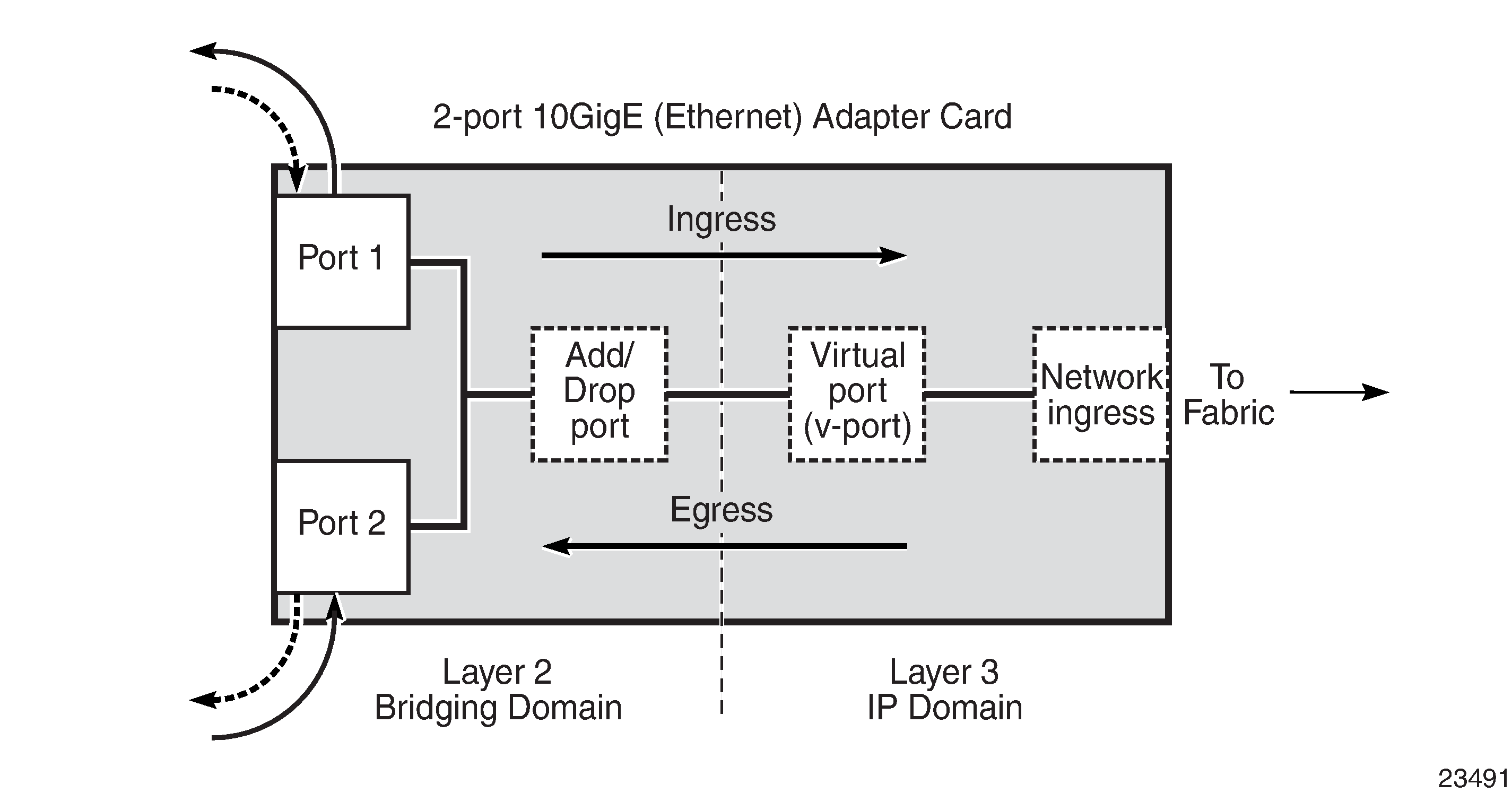On the 2-port 10GigE (Ethernet) Adapter card and 2-port 10GigE (Ethernet) module, traffic can flow between the Layer 2 bridging domain and the Layer 3 IP domain (see Figure: Ingress and Egress Traffic on a 2-port 10GigE (Ethernet) Adapter Card). In the bridging domain, ring traffic flows from one ring port to another, as well as to and from the add/drop port. From the network point of view, traffic from the ring towards the add/drop port and the v-port is considered ingress traffic (drop traffic). Similarly, traffic from the fabric towards the v-port and the add/drop port is considered egress traffic (add traffic).
The 2-port 10GigE (Ethernet) Adapter card and 2-port 10GigE (Ethernet) module function as an add/drop card to a network side 10 Gb/s optical ring. Conceptually, the card and module should be envisioned as having two domains—a Layer 2 bridging domain where the add/drop function operates, and a Layer 3 IP domain where the normal IP processing and IP nodal traffic flows are managed. Ingress and egress traffic flow remains in the context of the nodal fabric. The ring ports are considered to be east-facing and west-facing and are referenced as Port 1 and Port 2. A virtual port (or v-port) provides the interface to the IP domain within the structure of the card or module.
